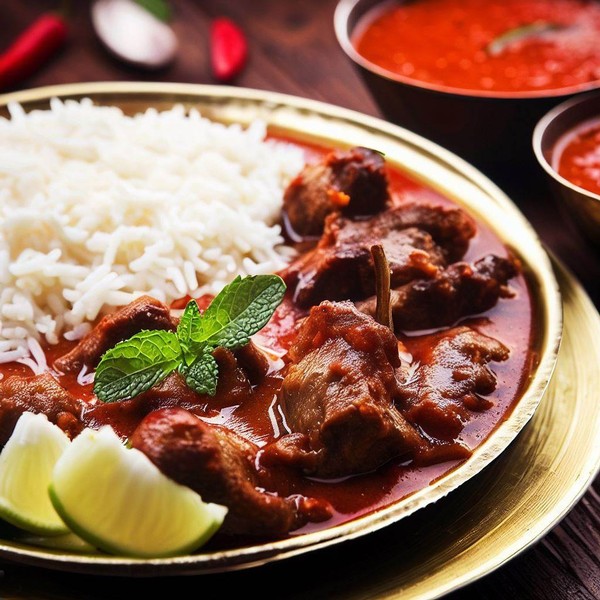My Lamb Curry

This Indian lamb curry is made with any kind of stewing lamb you have. I made this recipe for those left over pieces of lamb that we all tend to gather in the freezer. You can make it with shoulder, shanks, knuckles, or just about any part of the lamb. It's simmered with fragrant spices, caramelized onions, and Greek yogurt until fork-tender. Served over Indian bread or basmati rice, this is a spectacular curry.
Marthinus StrydomThe Story
Lamb curry is a popular dish that originated in the Indian subcontinent, specifically in the Northern region. The history of lamb curry dates back to the Mughal period when it was considered a royal dish served to the Mughal emperors. The Mughals introduced a wide range of spices to the Indian cuisine, and lamb curry became one of the most favored dishes. With time, the recipe for lamb curry spread across India and the rest of the world, with each region adding its own unique twist to the recipe. Today, lamb curry is enjoyed globally and is a staple in many households. It has become a symbol of the rich cultural history of India and the delicious flavors of Indian cuisine.

Subscripe to my Facebook page.
Subscripe to my Youtube channel.
© All recipes are copyright protected by TheCultureCook.com unless the recipe was adapated from another source. All recipes are uniquely crafted and adapted by TheCultureCook.com. Copyright of some or all of the text reside with the original author.
Ingredients
Method
- Remove the fat from the lamb. Fat in a curry isn't cool.
- Heat the vegetable oil and brown the lamb. Make sure it's properly browned. Do it in batches. Set aside to cool.
- Once cooled, in a large bowl mix together the yogurt and turmeric. Add the lamb and rub all over massaging it into the meat. Set aside.
- Gently heat the vegetable oil and add the fenugreek seeds, cloves, green cardamom, bay leaves, cinnamon stick and dried red chillies.
- In a pestle & mortar slightly grind the cumin seeds, coriander seeds and fennel seeds.
- Keep an eye on the masala in the pan and once they start sizzling add the coarsely crushed seeds.
- Once they begin to sizzle add the onions. Stir well and allow to cook until they have turned soft and change colour to light golden brown.
- Add the garlic, ginger and all the chillies and allow to cook for a further minute. Be careful with the gillies. You can always add more later, but you don't want to spoil the meal by making it too hot.
- Stir in the coriander powder, fennel powder and chili powder (if using) and add a few tablespoons of water to prevent the spices from burning.
- Allow the masala to cook, leaving the spices to release their essential oils and aromas. This will take a few minutes and you will start to see a little oil rising to the surface. Stir often until it looks like all the masala has released most of its oils, adding a little more water if it starts to stick.
- Add the marinated lamb.
- Stir well and add the chopped tomatoes and salt.
- Top with enough water so it is just below the lamb. Stir well and bring to a simmer. Cover and allow to cook until very tender (30min - 2 hours depending on the cut of lamb). Every 10 minutes or so, stir the masala to ensure nothing is sticking to the base of the pan.
- Once the essential oils have risen to the surface, stir through the coriander.
- Taste and adjust the seasoning with salt if you need to.
- Serve on a bed of rice, with more fresh coriander sprinkled on top.
